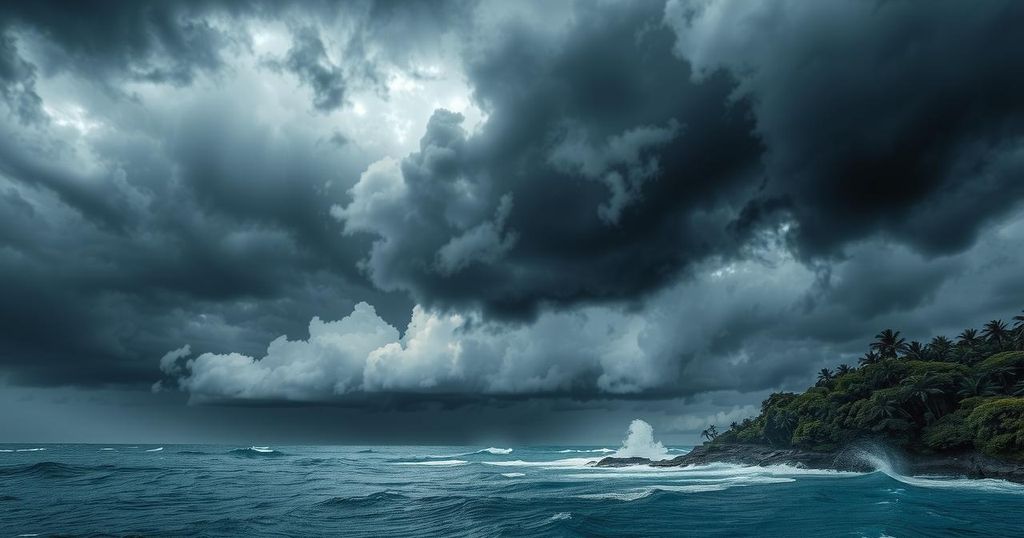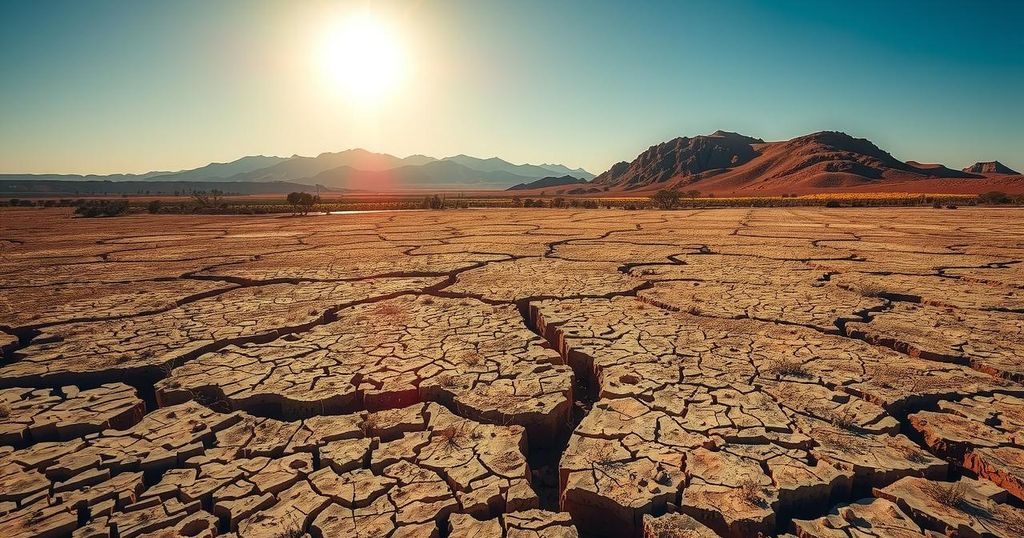Mozambique Confronts Escalating Cyclone Crisis as Storms Intensify
Mozambique has recently experienced a catastrophic series of cyclones—Chido, Dikeledi, and Jude—over three months, causing widespread devastation and displacement. Experts warn of the increasing frequency of extreme weather events in the region, which is straining humanitarian resources. Investment in disaster preparedness and resilient infrastructure is essential for mitigating future impacts as the cyclone season continues.
Mozambique is currently grappling with a severe cyclone crisis, having experienced three significant cyclones—Chido, Dikeledi, and Jude—in a mere three months. These storms have severely impacted one of the poorest regions globally, displacing thousands of residents and stretching the resources available to humanitarian organizations. Experts fear that such extreme weather events are becoming increasingly frequent, threatening the stability of the region.
The typical cyclone season in Mozambique ranges from November to April; however, this year has seen an exceptional spike in intensity. Cyclone Chido, which hit in mid-December, resulted in the deaths of at least 120 individuals before striking Madagascar. Cyclone Dikeledi followed in January, leading to at least five fatalities and compounding the region’s vulnerabilities.
Last week, Cyclone Jude made landfall with ferocious winds peaking at 195 km/h (120 mph), tragically resulting in at least 16 deaths in Mozambique and obliterating over 40,000 homes. The United Nations estimates that Jude affected approximately 420,000 individuals across Madagascar, Malawi, and Mozambique. Notably, both Jude and Dikeledi hit Nampula province, showcasing the concentrated devastation within this region.
Humanitarian workers express alarm that the repeated cyclones are overwhelming communities that are still reeling from previous storms. The population most at risk, particularly those in remote locations, remains ill-equipped to endure successive climate crises. Guy Taylor, a UNICEF spokesperson in Mozambique, remarked that all river basins and dams in Nampula province were already nearly full by the time Cyclone Jude arrived, exacerbating the catastrophe.
Historically, Mozambique has faced severe cyclones, such as Cyclone Idai in 2019, which claimed more than 600 lives. Meteorologists, however, now document a notable increase in cyclone activity in the region. Previously averaging six to seven tropical storms per decade, recent data reveals that ten cyclones have occurred in the past six seasons alone.
Rising ocean temperatures in the Mozambique Channel may intensify this cyclone phenomenon, as warmer waters fuel cyclonic activity. Langlade observed that this season, eight out of eleven recorded tropical storms attained full cyclone status, indicating a substantial increase in cyclone intensity, well above the historical average.
Although it is still uncertain whether this surge represents a long-term trend or a mere natural fluctuation, the repercussions are undeniably severe. Experts emphasize that Mozambique requires significant investments in disaster preparedness and infrastructure to equip against future storms. Taylor highlighted UNICEF’s initiative to construct over 1,000 cyclone-resistant classrooms, emphasizing the crucial need for such adaptability to safeguard lives and property.
As the cyclone season remains active, Mozambique’s future appears precarious, and aid organizations are preparing for the looming prospect of yet another storm.
In summary, Mozambique is facing an escalating cyclone crisis with three significant storms occurring within a short time frame. This situation highlights the urgent need for improved disaster preparedness and infrastructure investment to better support vulnerable communities. Experts caution about the increasing frequency of cyclones, underscoring the importance of resilient adaptation measures to minimize the impacts of future disasters.
Original Source: newscentral.africa




Post Comment